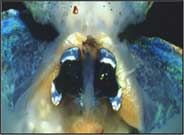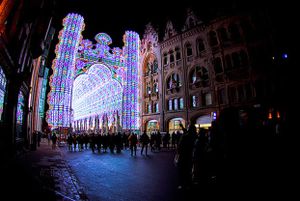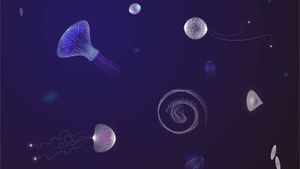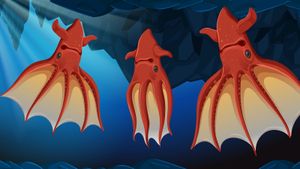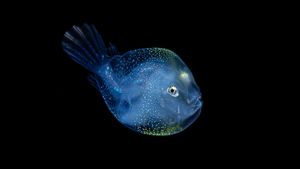Evolution and Shared Light
Animals can either house these substances in their own bodies or develop a symbiotic relationship with light-producing bacteria. These bacteria live in a light organ in the host organism's body. The bacteria produce light all the time, so in order to turn their lights on and off, some animals can pull their light organs into their bodies. Others cover them with pieces of skin similar to eyelids. Some organisms also use a fluorescent substance, like green fluorescent protein (GFP), to adjust the color of the light they create. The fluorescent substance absorbs the blue-green light and emits it as a different color.
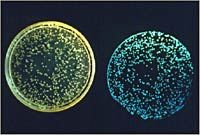
Because of all these variations in luciferins, luciferases and how animals use them, many researchers believe that the ability to make light simultaneously and independently evolved in multiple forms of life. The fact that there are few bioluminescent animals in freshwater environments supports this theory. Fresh, inland bodies of water haven't existed as long as the world's oceans have, so the animals that live there haven't had as much time to adapt to their surroundings. In addition, the bottoms of most bodies of fresh water aren't dark enough to require additional sources of light.
Advertisement
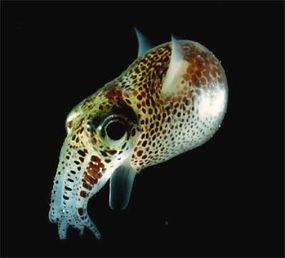
Animals have lots of methods for producing and using light, and people have discovered lots of uses for the light animals can create. Researchers can use single-celled luminescent organisms that light up when disturbed to study the way animals move through water. Scientists have also given bioluminescent traits to non-luminescent animals in order to perform research on the progression of diseases like cancer and Alzheimer's. Such research can make bioluminescence as useful to people as it is to other forms of life.
To learn more about marine life, bioluminescence and related topics, follow the links below.
Bioluminescence FAQ
What causes bioluminescence?
Is bioluminescence harmful to humans?
What causes bioluminescence in the ocean?
Why are some fish bioluminescent?
Where can I see bioluminescent waves?
Related Articles
More Great Links
Sources
- Coder, Kim D. "Foxfire: Bioluminescence in the Forest." University of Georgia School of Forest Resources. 1999 (6/25/2007) http://plone.urbanforestrysouth.org/Resources/Library/Citation.2004-07-16.2350
- Davidson College. "Bioluminescence." Animal Physiology. (6/25/1007) http://www.bio.davidson.edu/Courses/anphys/1999/Cody/definition.htm
- Haddock, S.H.D.; McDougall, C.M.; Case, J.F. "The Bioluminescence Web Page", http://lifesci.ucsb.edu/~biolum/ (created 1997; updated 2006; accessed 6/25/2007).
- Harbor Branch Oceanographic Institution. Bioluminescence. (6/25/2007) http://www.biolum.org
- The Bioluminescence Web Page http://www.lifesci.usb.edu/~biolum/
- Jennings, Paige. "Glow with the Flow." Scripps Institution of Oceanography." (6/25/2007) http://explorations.ucsd.edu/biolum/
- Mills, C.E. "Bioluminescence and Other Factoids About Aequorea, a hydromedusa." University of Washington. http://faculty.washington.edu/cemills/Aequorea.html
- Pieribone, Vincent and David F. Gruber. "A Glow in the Dark: The Revolutionary Science of Biofluorescence." Harvard College. 2005.
- Scripps Institution of Oceanography. "Bioluminescence Questions and Answers." (6/25/2007) http://siobiolum.ucsd.edu/Biolum_q&a.html
- Wampler, John E. "Bioluminescence Studies." University of Georgia. (6/25/2007) http://www.bmb.uga.edu/wampler/biolum/index.html
- Wampler, John E. "Earthworm Bioluminescence." 3/5/1999 (6/25/2007) http://bmbiris.bmb.uga.edu/wampler/biolum/worm/
- Widder, Edith A. "Marine Bioluminescence." Harbor Branch Oceanographic Institution. 2001. (6/25/2007) http://www.bioscience-explained.org/EN1.1/pdf/BiolumEN.pdf
